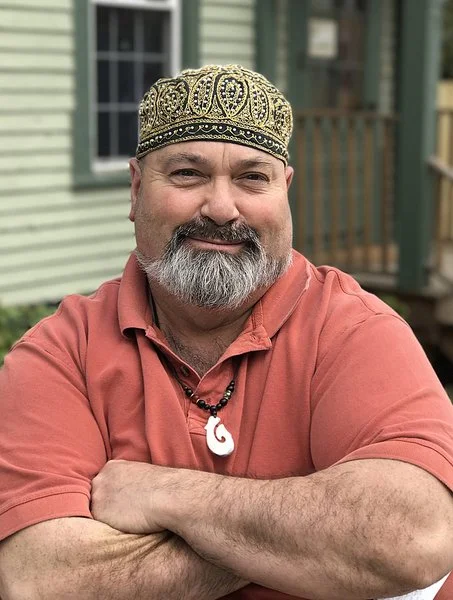STEPHEN DICERBO
Mutsugoroh
Stephen DiCerbo, also known by his artist name Mutsugoroh, was born in 1957 in Schenectady, New York. His lifelong fascination with fish began in early childhood, exploring hatcheries and nearby streams. By age 14, he was tying his own fishing flies and catching brook trout in Vermont. His passion for the natural world led him to earn an Associate degree in Fish and Wildlife Technology from SUNY Cobleskill, where he also began illustrating scientific manuscripts.
Throughout the 1980s and 1990s, Stephen explored the waters of the Adirondacks, Catskills, and Great Lakes tributaries, fishing for trout and steelhead. His travels later took him to the Rocky Mountains and the Atlantic coast. It was during this time he discovered Gyotaku, the traditional Japanese art of fish printing. Initially self-taught, he later studied the Kansetsu-ho (indirect) method under Master Mineo Ryuka Yamamoto of Japan, who would eventually grant him the title of Master Gyotaku Printmaker in 2014.
In 2009, Stephen earned a master’s degree in Science Illustration from Sage College and established Stormtree Studio in North Hudson, New York. There, he began offering workshops and further refining his techniques in both Chokusetsu-ho(direct) and Kansetsu-ho styles of Gyotaku. His prints are known for their meticulous detail, delicate coloration, and the use of traditional materials like sumi ink, washi paper, silk, and tampos.
Stephen’s direct Gyotaku works emphasize detailed scale impressions and are hand-tinted on the reverse side of washi paper, often mounted over patterned backgrounds for visual depth. His indirect prints involve applying silk to the fish and layering colors with extreme precision, a meditative process that can take days. Each print serves as both a scientific record and a work of fine art.
Through his studio, Stephen—Mutsugoroh—continues to mentor new artists, share the traditions of Gyotaku, and innovate within the discipline. His work not only honors the natural beauty of aquatic life but also bridges cultures, blending Japanese printmaking heritage with an American naturalist’s eye.
